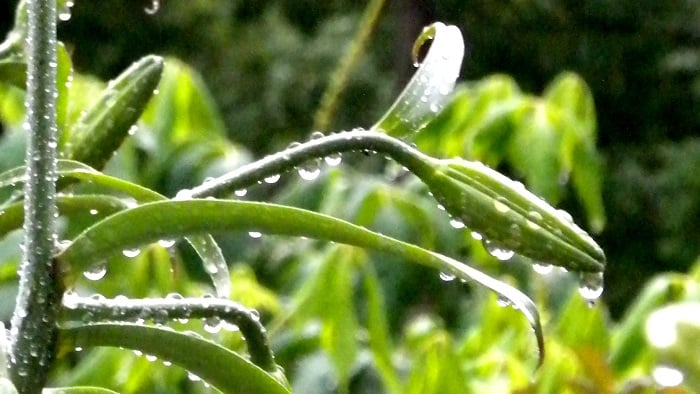 The heat of summer, especially in July and August, increases the challenges of maintaining a garden. You will need to pay attention to your plants’ need for watering.
The heat of summer, especially in July and August, increases the challenges of maintaining a garden. You will need to pay attention to your plants’ need for watering.
If you have mulched your garden, pull it away from the plant and check the soil for dampness before you water. Push your finger into the ground around your plants. You want the top 2 to 3 inches of the soil to be dry and the soil below that to be moist. Plants look very similar wilting from too much water as too little. And before you turn on the hose, check your local weather forecast to see what Mother Nature has planned.
Soaker hoses buried beneath mulch are the best way to keep your garden watered and reduce diseases. You may not have this luxury and, like me, use overhead watering. To measure water when using a sprinkler, mark the inside of a coffee can with a permanent marker indicating each inch and place it within the area you are watering.
A five-gallon pail filled with water equals about an inch when poured around a small ornamental tree. Time how long it takes to fill the pail, and then you’ll know how long it takes to hand water a tree needing an inch or more per week.
Here is some watering advice from the book Month-by-Month Gardening in Michigan by James A. Fizzell:
Annuals: Maintain a regular watering routine. When the plants begin to wilt, apply a measured inch of water. This amount will moisten the soil about 6 inches deep, plenty of water for about a week on heavy soils, about half that long on sand. Do not water again until the soil dries down 2 inches deep.
Perennials: Water plants when they show wilting. Apply an inch of water per week for mulched beds. You may need more for bare soil (...and why, I might ask, is it bare?)
Herbs: It is important that most herbs grow on the dry side. Check the soil. If it does not rain for a week to ten days, apply an inch of water. Water early in the day so plants dry before dark. Soaker hoses are better for herb gardens, keeping foliage dry.
Roses: Keep soil evenly moist but not wet. Check soil two inches down before watering. It is best to hand water and keep the leaves dry.
Shrubs: Set slow running hose under plants every two weeks, soak them until water begins to trickle off. Pay particular attention to newly planted shrubs with underdeveloped root system; they may need weekly watering until established.
Trees: Apply 2 inches of water to entire area beneath the tree’s canopy using a sprinkler. In severe drought you may need to water every 2-3 weeks.
Some additional watering tips:
Containers and hanging baskets dry exceptionally fast this time of year because the plants are bigger, using more water, and because of the dry hot air. Increase your watering frequency to accommodate this need, sometimes watering a small 10” hanging basket twice a day when in full sun. Be sure to use fertilized water once a week.
For trees and shrubs on a slope that do not have soaker hoses, set a slow running hose on the up side over the root ball. The water will trickle down towards the trunk and disperse over a larger area.
To water an area where hoses don’t reach, I use a 30 gallon soft rubber garbage can set in the tailgate (or trunk) of my car, secured with bungee cords. I fill the garbage can to within six inches of the top with water, cover it with its lid, drive to the site, and then scoop out water using a smaller pail or watering can.
It takes a bit more work this time of year to keep our gardens, but is well worth the effort.
Copyright 2015 Margaret Rose Realy, Obl. OSB.
Image by Margaret Rose Realy, Obl OSB. All rights reserved.
About the Author

Margaret Rose Realy, Obl. OSB
Margaret Rose Realy, Obl. OSB lives an eremitic life and authored A Garden Catechism, A Catholic Gardener’s Spiritual Almanac, A Garden of Visible Prayer: Creating a Personal Sacred Space One Step at a Time, and Cultivating God’s Garden through Lent. An award-winning author, Margaret has a master’s degree in communications, is a Certified Greenhouse Grower, Master Gardener, liturgical garden consultant, and workshop/retreat leader.


.png?width=1806&height=731&name=CatholicMom_hcfm_logo1_pos_871c_2728c%20(002).png)
Comments